Revive a vac: a guide to buying and servicing a secondhand vacuum cleaner

If your vacuum has gone bung and you’re in the market for a new model, you could consider buying secondhand at a fraction of the cost. But will an older model perform as well as new? What should you look for before purchasing? And what servicing should you do before you use it?
Whether you’re buying a second-hand vac, or want to maintain your own aging one, a few simple things can make a big difference to its performance.
We bought a 20-year-old Dyson DC08 corded vacuum from Trade Me for $68 and gave it a thorough service, testing its suction before and after. Then we sent it to the lab for a full test alongside a batch of new models so we could compare its performance. Did we find enough life in this old vac?

What servicing should you do?
The servicing tasks for your vacuum will vary depending on its make and model. For the Dyson we serviced the following components:
- Inlet filter (pre-motor) – wash or replace
- Exhaust filter (post-motor) – wash or replace
- Floor head – clean
- Wheels – clean and check
- Cyclone or bin – strip down and clean
- Hose – check
- Power cable – check.
All these tasks (except the cyclone strip down) took less than an hour to complete and will be common servicing checks to do for many vacs.
Cleaning the inlet filter
First stop in the service should be your vac’s inlet (pre-motor) filter as this is where the most suction and performance can be lost. The filter in our DC08 looked like it had never been cleaned in its 20-odd years of life!
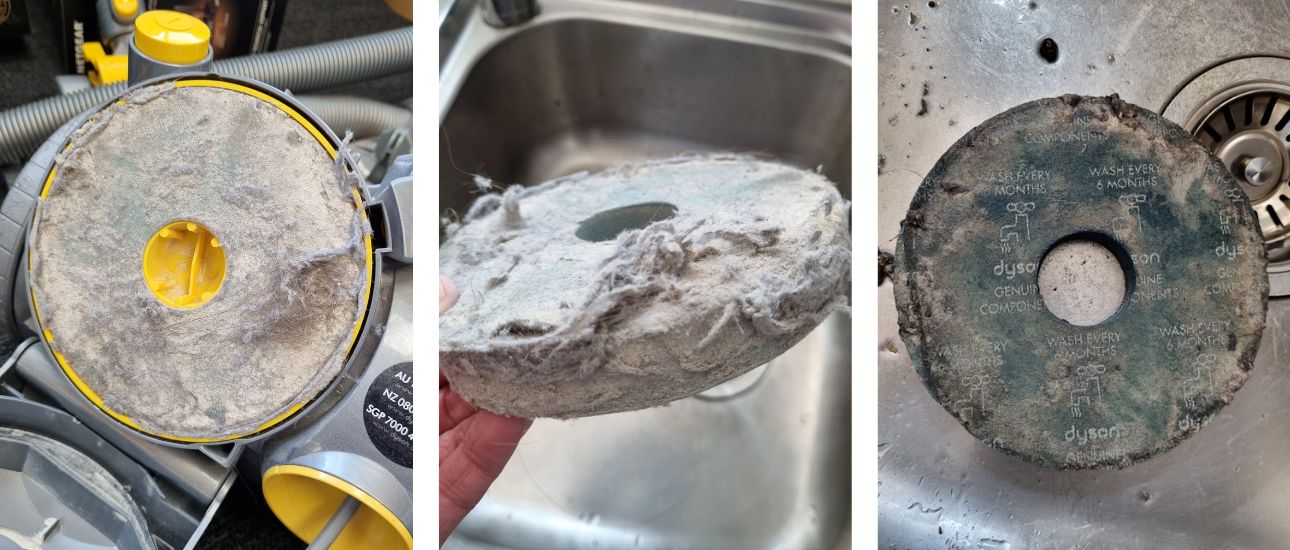
Luckily the Dyson inlet filter is washable, so a good soak, multiple rinses and a few hours in the sun got ours looking like new.
If you find your vacuum’s inlet filter is beyond cleaning, then you can usually get replacements direct from the manufacturer or retailer, but if it’s an old model you might need to check Trade Me or eBay. Filters for the DC08 can be bought on Trade Me for less than $10. For some brands, such as Miele, you may find the inlet filter isn’t washable, so you’ll need to buy a replacement anyway.
Prior to servicing, we had tested the DCO8 performance with a suction gauge measured in kilo pascals (kPa). It showed the suction at the end of the hose was 18kPa. After the filter service this increased to 23kPa.

Cleaning the floor head
Dirt can build up in the opening of your vacuum’s floor head and restrict air flow, so a regular clean out is recommended.
With many vac models, including the Dyson, the head can just be dumped into a sink of soapy water for cleaning. But don’t do this if you have a vacuum with a powered head! You’ll need to use a brush (an old toothbrush works well) and damp cloth to clean a powered head.
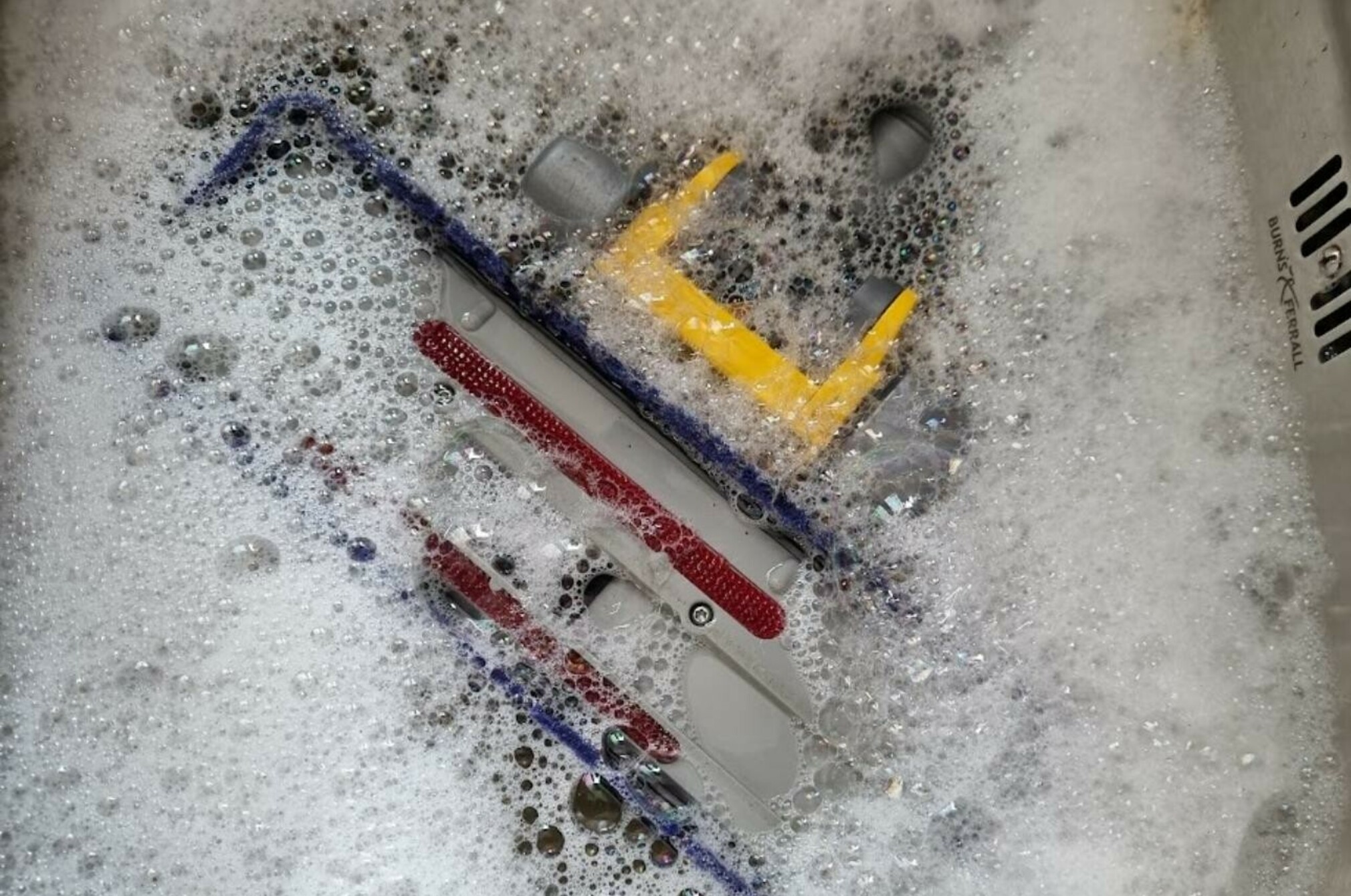
If the head has wheels, check they are running freely as they can often get jammed with tangled hair and other fibres. Getting rid of the tangles can be a pain when the wheels aren’t designed to be removed. On the Dyson, we had to use a metal punch to push one of the wheel pins out, so we could remove and clean it. Alternatively, you can use tweezers and a sharp knife or scissors.
If you keep on top of removing hair regularly, you shouldn’t have to remove the wheels at all.
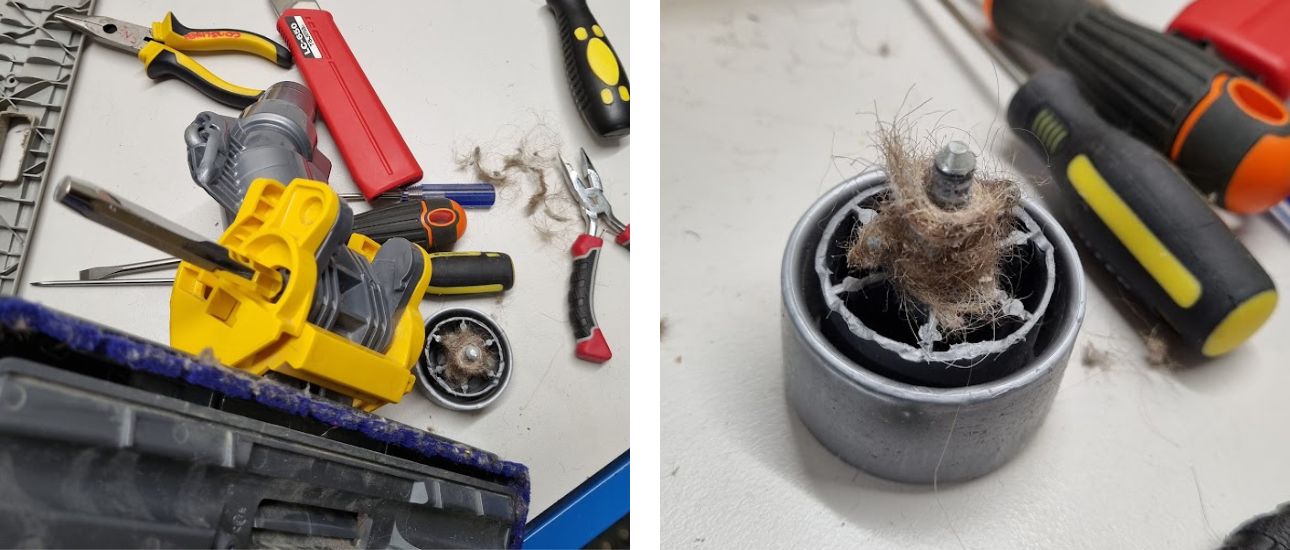
Cleaning the exhaust filter
Some models will also have an exhaust (post-motor) filter. On the Dyson this sits under a cover underneath the dustbin. For other models consult your manual.
Ours was pretty grubby, and the non-washable type, but we washed it anyway, and it survived intact. Replacements are usually available for a small cost if you don’t want to be so reckless.
Cleaning and stripping down the bin or cyclone
If your vac has a replaceable dustbag, regular replacement is important to maintain suction, as full bags don’t suck properly. During replacement, check that the opening on the vac’s side isn’t dirty or blocked.
Dustbins in bagless vacs need a regular clean out to avoid blockages, which again can reduce performance. Usually, a wash in the sink will suffice, but for our Dyson DC08 we decided to perform a full strip down and clean of the bin and cyclone.
The cyclone is Dyson’s fancy term for their suction bin unit. We followed a YouTube guide to take it apart and clean it, as you can’t just dump the whole thing into the sink – there is a paper gasket inside that will absorb water.
We found a lot of dust inside this marvel of engineering so, having first removed the gasket, we washed all the parts in soapy water. Then we thoroughly dried them before reassembling.
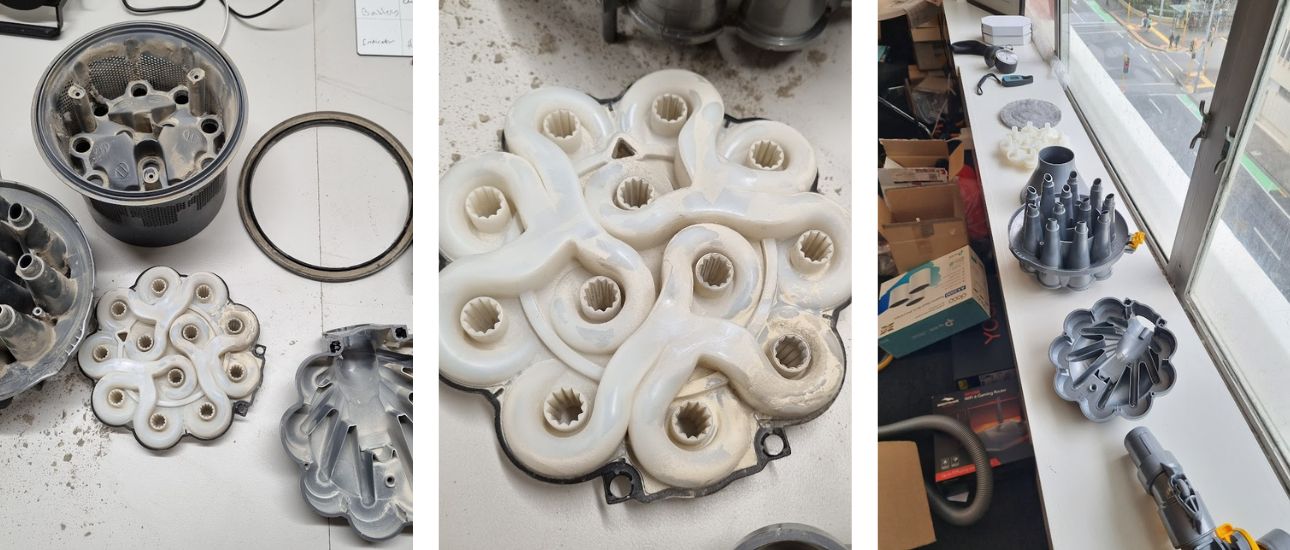
Did it make a difference? Yes! We gained another kPa of suction at the hose end, giving a total increase in suction of 32% over the uncleaned unit.
Other checks
Check that your vac’s hose hasn’t got any holes or major blockages inside. If you do find a split then you may need to source a replacement, but good ole duct tape is your friend here too.
It’s also worth periodically checking your power cable. Often vacuums will stop working because of a split in the power cable and the machine heads to the dump, when it could still be easily repaired by someone competent with basic electrical wiring.
Testing the performance of our serviced vac
Having finished our service, we put the Dyson DC08 through our standard vacuum cleaner lab test. This consists of:
- a quick carpet clean, using four passes over the same spot, then measuring the amount of dirt sucked up
- a full carpet clean of 10 passes, again with the amount of dirt collected measured
- a test to see how well pet hair is picked up
- a corners and edges test to see how well the vac cleans in these areas.
The DC08 ended up with a score of 61 for overall carpet cleaning (a combination of quick and full tests), and 40 for pet hair removal. It received an assessment of “poor” for corners and edges. But what does that mean in the real world?
To find out, we compared the DC08’s result with those from our lab tests of other budget models – those priced at under $200 when purchased new. Our Dyson placed fourth!
We also compared our DC08’s cleaning performance with that of four new Dyson models we’ve tested in our lab.
This time it came fourth, beating our second most expensive Dyson model too!
It didn’t do so well for pet hair removal compared to the other models, but that’s likely to be due to the DC08 not having a turbo head (which uses air flow to spin a rotating brush that helps lift up dirt). Most new models have turbo or powered heads.
Buying second hand
If you do decide to a buy a second-hand vacuum, then making the following simple pre-purchase checks will help you get a good deal.
- Look at the vac’s general condition. Is it clean and does it look like it’s been looked after?
- Check the condition of any filters. Are they washable or are spares available?
- See if the hose is in good condition, without any holes or kinks.
- Check the power cord for any damage along its whole length. Does the cord retract mechanism function correctly?
- If the wand is adjustable, test that it works. Check all the clips from the hose and head to the wand.
- Test any mechanisms on the floor head, and whether the wheels run freely.
- Turn it on! Place the palm of your hand on the end of the hose – it should suction on with some force.
We don’t seem to treat our vacuum cleaners with the same care we do other appliances. They don’t really get serviced, then get bashed around and chucked into a cupboard after a clean. Often machines are thrown away due to simple failures of clips, buttons, wheels or heads. If this happens to yours, before you bin it, think about finding replacement parts online or in your local second-hand stores. Then follow our service guide to give your vac a new lease of life.
Should you buy a second-hand Dyson?
If you need a new vac and are on a tight budget, say less than $200, you should certainly consider looking for a good-condition older model Dyson, as our DC08 performed better than some new sub-$200 models from other brands (and also better than some very expensive ones too!).
Dyson made a heap of the DC08s, so there are plenty still out there for spares, plus you can still get replacement motors, filters and many other parts online (just check Trade Me). You can also upgrade the floor head to a turbo model, which will improve dust and pet hair pick up too.
Our DC08 wasn’t quite as good a performer as we had hoped, considering its suction power, and this leads us to two conclusions.
- Performance isn’t solely related to power ratings – don’t get fooled into thinking a 2,000W vacuum will clean better than a 1,400W one. The design of the floor head is really crucial when it comes to suction and lifting up dirt. Our top-rated carpet-cleaning vacs all have turbo or powered heads.
- Vacuum cleaner design has improved significantly over the past 20 years – so if you do want the best cleaning performance, check our latest test results and consider a new or nearly new model.
We've tested 106 standard vacuum cleaners.
Find the right one for you.
Akitas
.jpg&w=315&q=75)
Anko
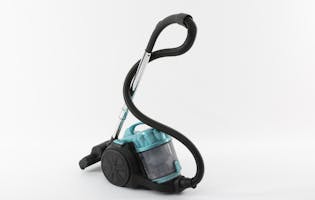
Anko
.jpg&w=315&q=75)
Member comments
Get access to comment